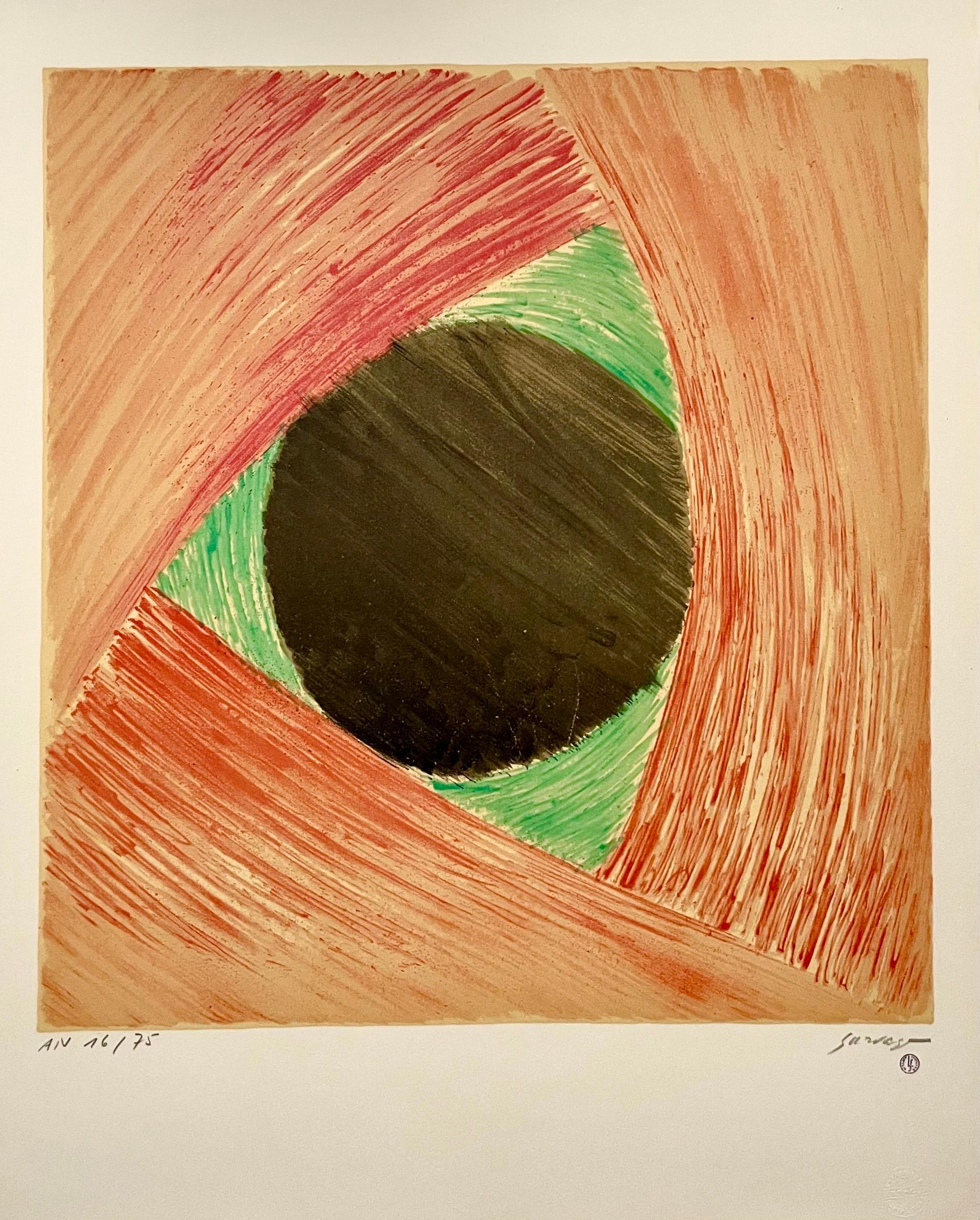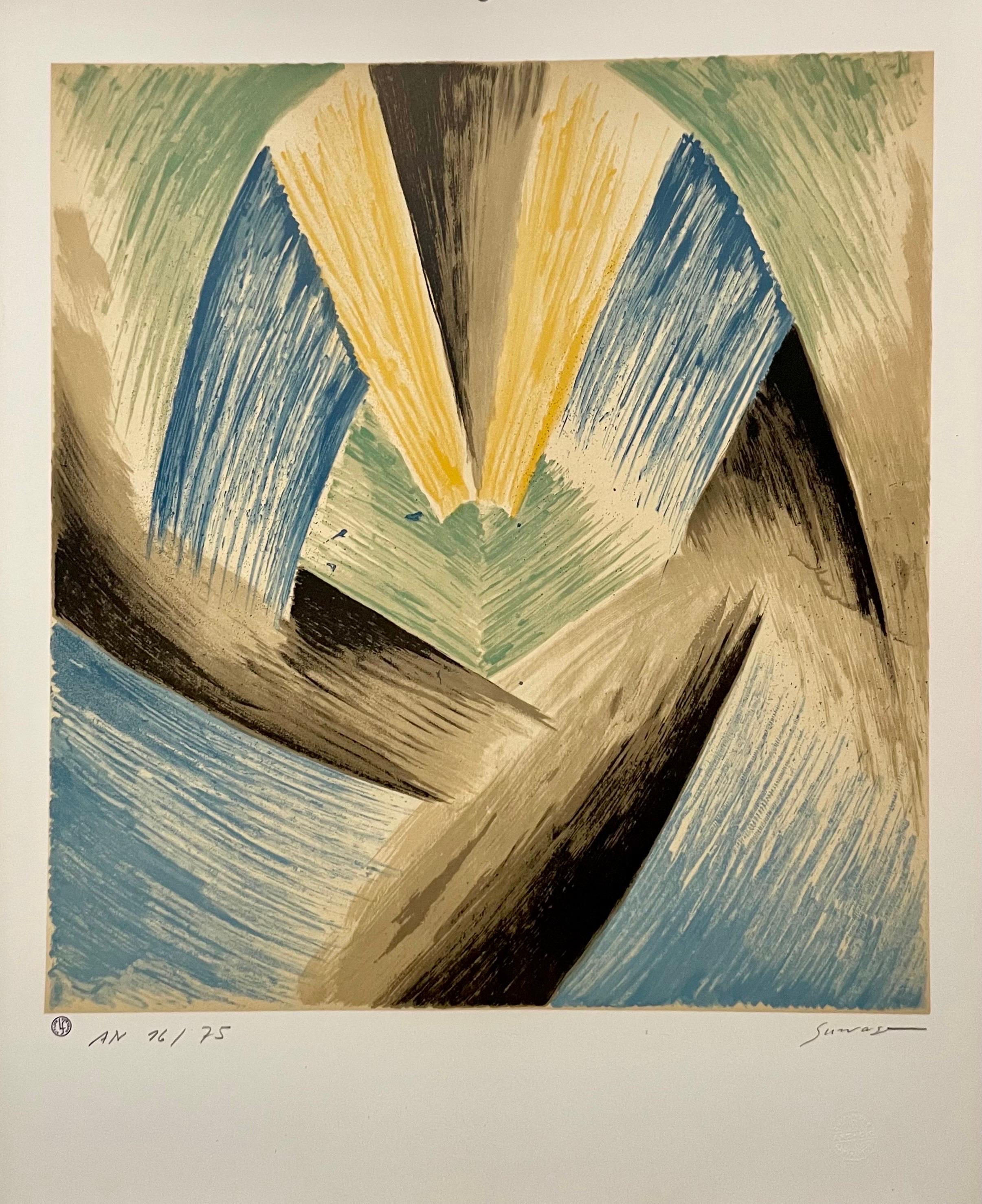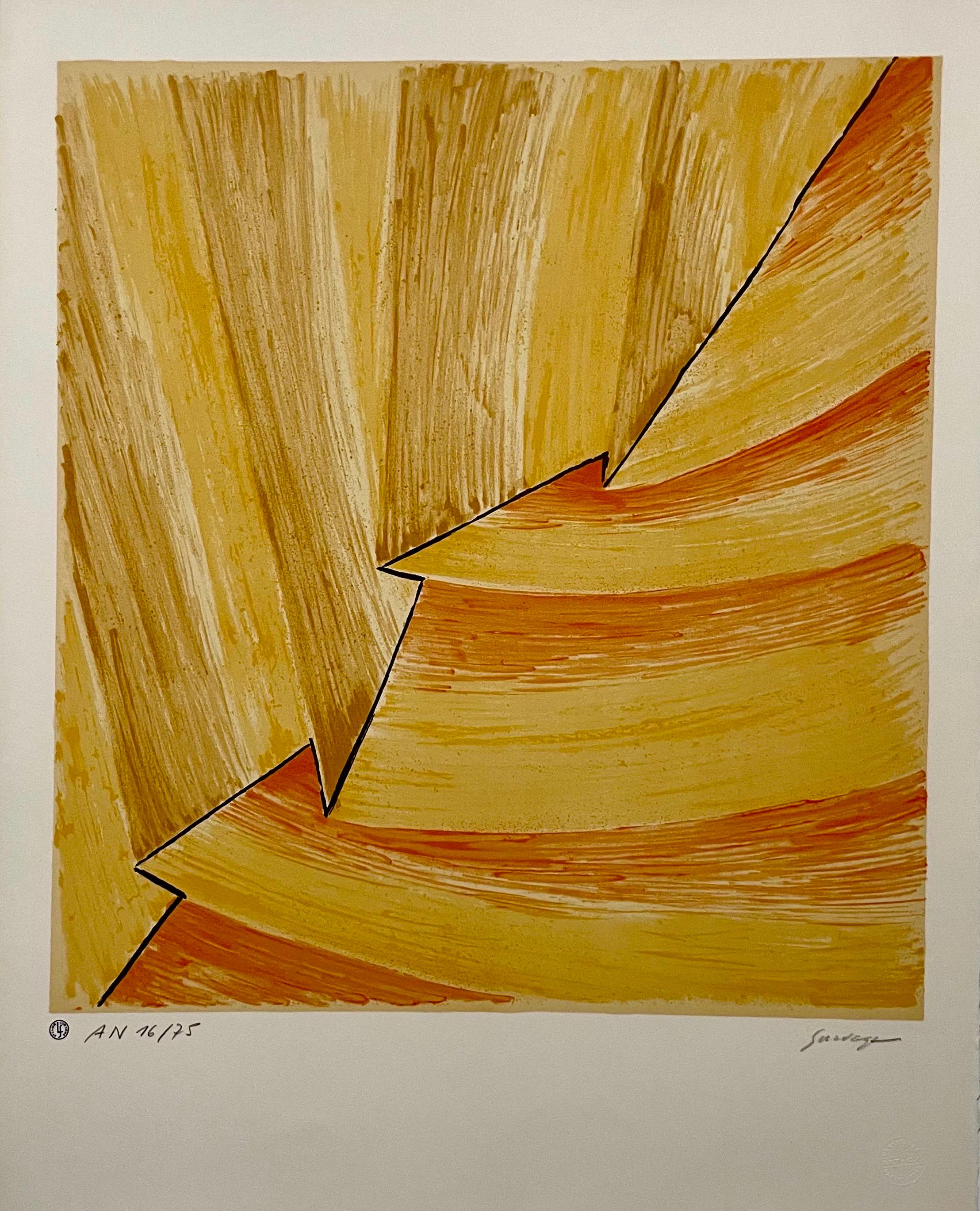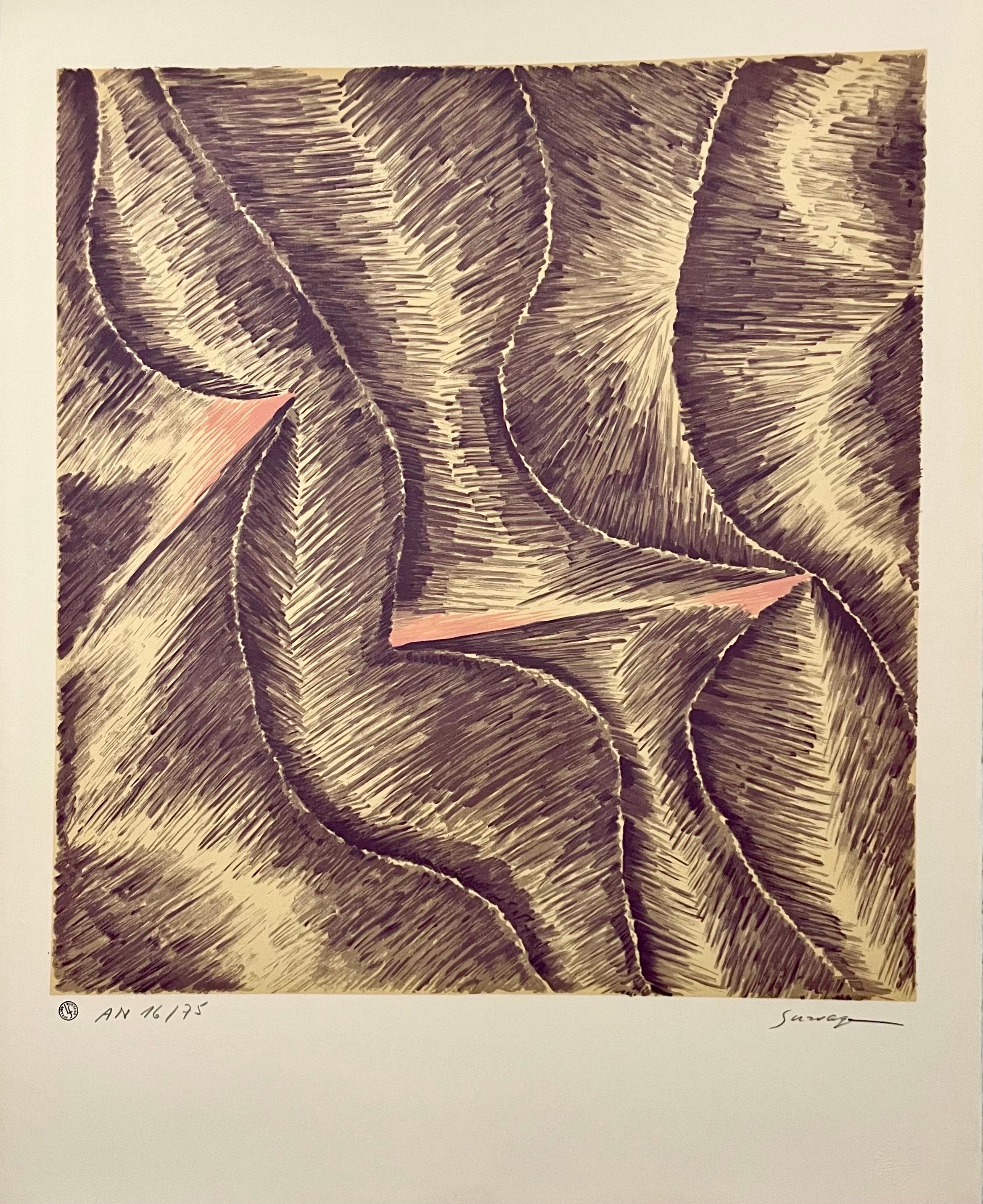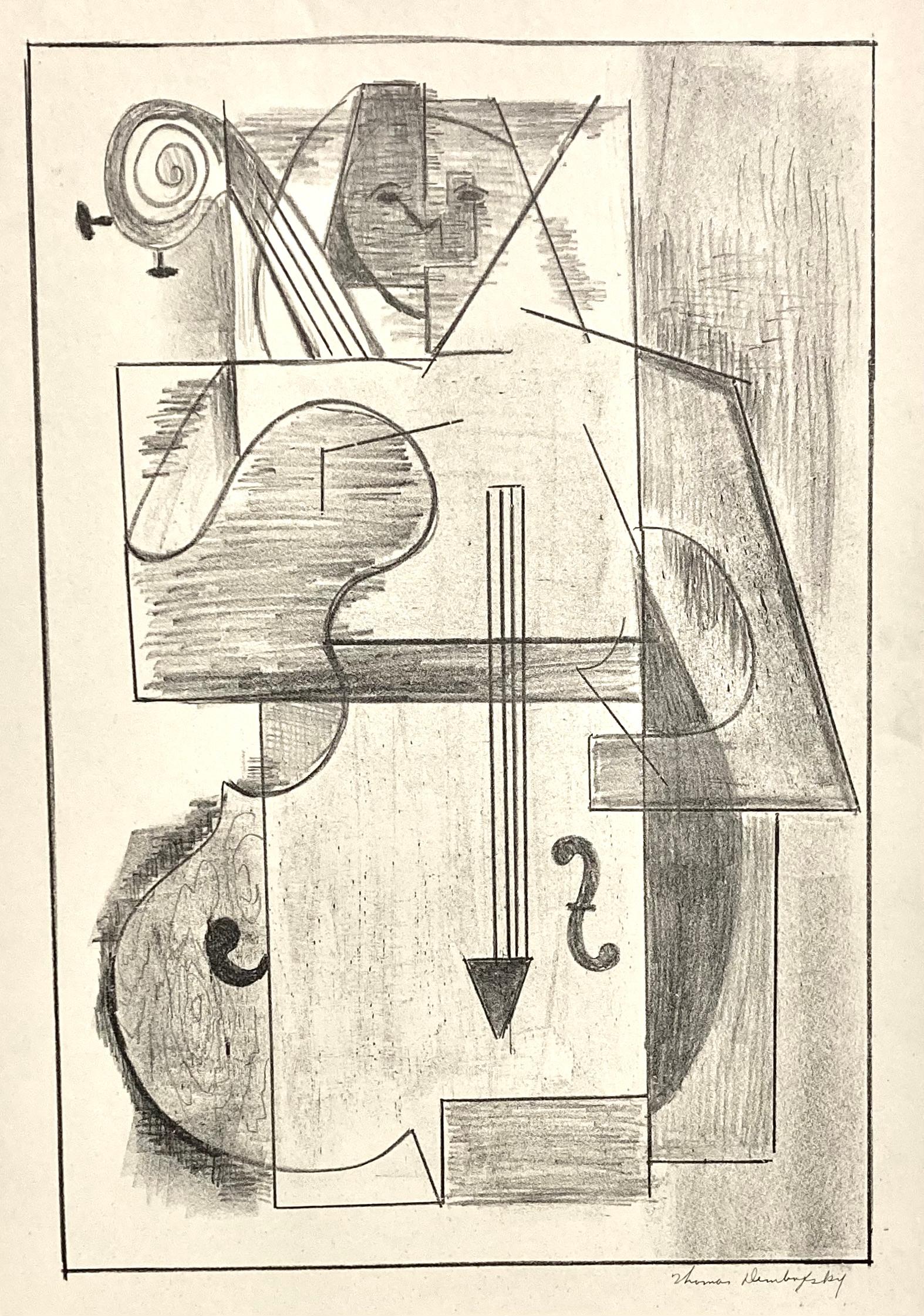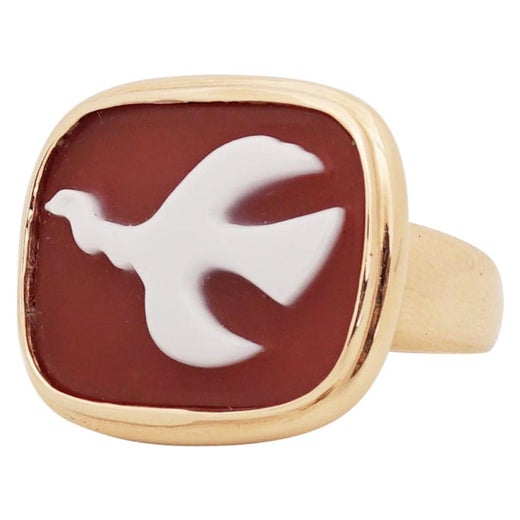Georges Braque"Braque Graveur, " an Original Lithograph Poster signed Georges Braque1953
1953
About the Item
- Creator:Georges Braque (1882 - 1963, French)
- Creation Year:1953
- Dimensions:Height: 38.75 in (98.43 cm)Width: 30.25 in (76.84 cm)
- Medium:
- Movement & Style:Synthetic Cubist
- Period:
- Condition:
- Gallery Location:Milwaukee, WI
- Reference Number:
Georges Braque
Georges Braque was born in Argenteuil, France, in 1882. Braque lived much of his childhood and young adult life in Le Havre. He attended night classes at the art school from 1897–99 and then moved to Paris, where he obtained his license as a master decorator. From 1905–06, after studying at École des Beaux-Arts in Paris and having been influenced by the works of Henri Matisse, he began to paint in the way of Fauvism by using bright colors and taking advantage of the freedom of the composition. Paysage à L'Estaque (1906) was one of the prominent works of art made at this time.
The year 1907 was a significant time in Braque's development, wherein he visited the retrospective on Paul Cézanne and he came into contact with Picasso, who was very engrossed in the realization of Les Demoiselles d'Avignon at the time. At this point, Braque began nurturing a considerable interest in primitive art. After the First World War, Braque worked autonomously and developed a more personal style, which was characterized by vivid colors and textured surfaces. Braque painted still life, interior views, and ocean scenes. The Ateliers (1948–55) and Birds (1955–63) series were painted during this period. In 1948, he obtained his first award for painting at the XXIV Biennial in Venice.
- ShippingRetrieving quote...Ships From: Milwaukee, WI
- Return PolicyA return for this item may be initiated within 14 days of delivery.
- "Stabile with Red Sun Galerie Maeght, " Original Lithograph Poster by A. CalderBy Alexander CalderLocated in Milwaukee, WI"Stabile with Red Sun Galerie Maught" is an original color lithograph by Alexander Calder. The Stabile is a black topsy-turvy statue taking up most of the piece. A red sun sits to th...Category
1970s Post-Modern Abstract Prints
MaterialsLithograph
- "Galerie Maeght, " Graphic Color Lines Lithograph Poster by Jean Rene BazaineLocated in Milwaukee, WI"Galerie Maeght" lithograph poster by Jean Rene Bazaine. This poster holds Bazine's name in harsh orange lines near the top of the piece. Diagonally bisecting the b and a in Bazaine is a teal line. Bellow this horizontally against the white backgrounds are two lines, one painted yellow and the other blue. Image: 29 x 21 in Jean Bazaine was a French painter, designer of stained glass windows, and writer. He was the great great grandson of the English Court portraitist Sir George Hayter. In 1949/1950 he had his first major one man show at the Galerie Maeght, who remained his art dealer thenceforth. From then on it was a steady progress of major exhibitions: Bern, Hanover, Zürich, Oslo... 1987 a retrospective exhibition in Galerie Maeght, 1988 a retrospective of his drawings in the Musée Matisse and finally in 1990 the Exposition Bazaine in the Galeries Nationales du Grand Palais, Paris., which was accompanied by the reissue of his major texts on painting in art theory as Le temps de la peinture (Paris, Aubier 1990). "The motley crowds of international tourists and souvenir-shoppers who fill the ancient streets of the Latin Quarter in Paris spend most of their time admiring the open-air displays of seafood outside the Greek restaurants in the rue de la Huchette. They ignore the beautiful church of St Severin in the same street, for have they not already "done" Notre Dame? So they miss one of the most wonderful series of stained-glass windows in France: Jean Bazaine's vivid, dynamic works irradiating the sombre ambulatory and apsidal chapels. These windows represent the seven sacraments of the Church, portrayed as essential forms from nature in all its glory and symbolising Water, Fire and Light, sacred emblems of Divine Grace. An appropriate biblical verse is inscribed beneath each. Only Pierre Soulages with his "luminous black" windows at l'Abbaye de Conques (1998) can stand comparison with the majesty of these contemporary works by Bazaine, created between 1965 and 1970. Bazaine was fortunate in his friends. He received at an early stage in his student career support and advice from another master colourist, Pierre Bonnard. In his youth he knew Leger, Braque, James Joyce and Marcel Proust. One of his great personal friends was Jean Fautrier, with whom he shared his first exhibition in 1930. His work gradually developed as a form of bold tachisme - brilliantly composed but well-controlled "splashes" of sumptuous colour. He rejected the term "abstract" which he considered a denial of the essentially intimate relationships between art and reality. He quoted his friend Braque: "The canvas must efface the idea behind it." In 1941, during the Nazi occupation, at a time when Hitler was destroying many works of modern art, Bazaine had the courage to organise in Paris a first "avant-garde" exhibition of 20 French artists. In 1948, he wrote his first book, an unpedantic, unacademic view of contemporary painting, Notes sur la peinture d'aujourd'hui. He quotes Braque on Cezanne: "He's a painters' painter - other people think it's unfinished." Bazaine, too, reverenced Cezanne: Three lines drawn by Cezanne overturn our whole concept of the world, proclaim the liberty of man, his courage. The great painters have never had any other aims. The painter says: "I exist, therefore you exist. I am free, therefore you are free. Or at least he tries to. It's his one aim in life." After the Second World War, Bazaine produced vast compositions with virtuoso colour structures, mostly with references to nature, like the breathtaking Vent de mer (1949, now in the Museum of Modern Art, Paris) and Orage au jardin (1952, now in the Van Abbemuseum at Eindhoven). His Earth and Sky (1950) is in the Maeght Foundation at Saint Paul de Vence. One of his greatest works, L'Arbre tenebreux (1962), was sold to the Sonja Henie...Category
1970s Post-Modern Abstract Prints
MaterialsLithograph
- "Fast Feast, " an Abstract Geometrical Lithograph signed by James RosenquistBy James RosenquistLocated in Milwaukee, WIA multicolored abstract lithograph by American artist James Rosenquist. This is number 36 from the edition of 100. Signed and dated lower right. Numbered and titled lower left. 37" ...Category
1970s Abstract Abstract Prints
MaterialsLithograph
- "Fig Trees-Antibes, " Color Lithograph signed by Paul GuiramandBy Paul GuiramandLocated in Milwaukee, WI"Fig Trees-Antibes" is a signed (lower right) color lithograph by Paul Guiramand. It depicts leaves in light green covering most of the surface as well as two...Category
1970s Modern Abstract Prints
MaterialsLithograph
- Jusqu'a L'Abstraction' color lithograph poster Wassily KandinskyBy Wassily KandinskyLocated in Milwaukee, WI"Jusqu'a L'Abstraction" is a lithograph poster by Wassily Kandinsky. This poster depicts abstract forms in purple, pink, blue, and black and was created for the Maeght gallery in Par...Category
1940s Modern Abstract Prints
MaterialsLithograph
- "Light on Water" Original Color Lithograph signed on verso by Emmi WhitehorseBy Emmi WhitehorseLocated in Milwaukee, WI"Light on Water" is an original 13 color lithograph with pochoir from 4 aluminum plates and 1 mylar stencil. It was created by the artist Emmi Whitehors...Category
Early 2000s Abstract Abstract Prints
MaterialsLithograph, Stencil
- Russian French Avant Garde Lithograph Rhythm in Colour Vibrant Abstract PrintBy Léopold SurvageLocated in Surfside, FLLéopold Survage (French/Russian, 1879-1968), "Rythmes Colorés", 1967-1968 Lithograph on Vélin d'Arches paper, Printed by Mourlot, Paris Hand signed in pencil and numbered "AN 16/75"...Category
1960s Cubist Abstract Prints
MaterialsLithograph
- Russian French Avant Garde Lithograph Rhythm in Colour Vibrant Abstract PrintBy Léopold SurvageLocated in Surfside, FLLéopold Survage (French/Russian, 1879-1968), "Rythmes Colorés", 1967-1968 Lithograph on Vélin d'Arches paper, Printed by Mourlot, Paris Hand signed in pencil and numbered "AN 16/75"...Category
1960s Cubist Abstract Prints
MaterialsLithograph
- Russian French Avant Garde Lithograph Rhythm in Colour Vibrant Abstract PrintBy Léopold SurvageLocated in Surfside, FLLéopold Survage (French/Russian, 1879-1968), "Rythmes Colorés", 1967-1968 Lithograph on Vélin d'Arches paper, Printed by Mourlot, Paris Hand signed in pencil and numbered "AN 16/75"...Category
1960s Cubist Abstract Prints
MaterialsLithograph
- Russian French Avant Garde Lithograph Rhythm in Colour Vibrant Abstract PrintBy Léopold SurvageLocated in Surfside, FLLéopold Survage (French/Russian, 1879-1968), "Rythmes Colorés", 1967-1968 Lithograph on Vélin d'Arches paper, Printed by Mourlot, Paris Hand signed in pencil and numbered "AN 16/75"...Category
1960s Cubist Abstract Prints
MaterialsLithograph
- 1956 Fernand Leger Mourlot Exhibition PosterBy Fernand LégerLocated in Wilton Manors, FL76 x 52 cm. Printed by Fernand Mourlot on rag paper watermarked "Mourlot." A condition. Not in Saphire. .Fernand Mourlot was born in Paris in 1895. He grew up in the family print shop but it wasn't until he took over in the early 1920s that he would change the fabric of printing forever. His influence fostered a resurgence of lithography, revealing it as a new avenue for expression and a new realm of possibilities for likes of Pablo Picasso, Henri Matisse, Marc Chagall, Joan Miró, Georges Braque, Fernand Léger, and Alberto Giacometti to enrich their own work as well as fine art in general. Fernand cultivated the lithograph as a painter's medium and the family studio on Rue Chabrol became a hub where he could invite artists to work directly on the stone, as if creating a poster. In 1937, the studio produced two posters (based on paintings by Matisse...Category
Mid-20th Century Cubist Abstract Prints
MaterialsPaper, Lithograph
- Thomas Dembovsky (sp?), (Cubist Musician)Located in New York, NYThis full-on view of a musician and his bass (also known as an upright bass or string bass), has an air of calm befitting the lowest-pitched bowed instrum...Category
1930s Cubist Interior Prints
MaterialsLithograph
